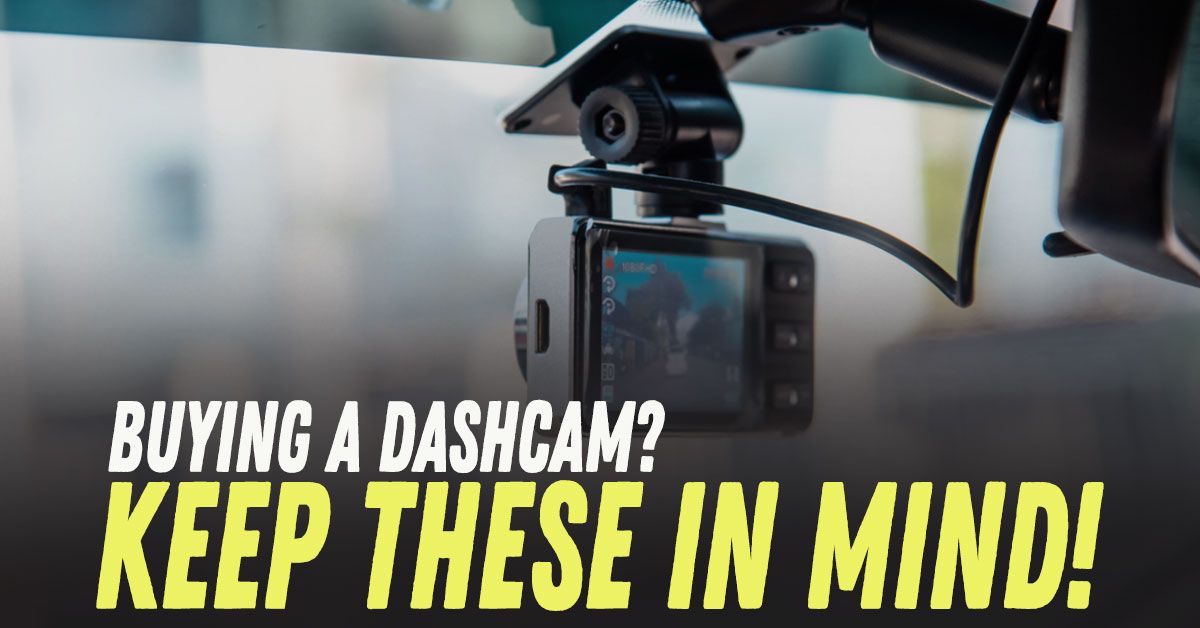Buying A Dashcam? Keep These Things In Mind!


The challenges posed by Indian roads and the crowd here have made the inclusion of dash cameras critical in our vehicles. If you are in the market to buy a dashcam, there are a few things to consider and analyse, before making a choice.
The viewing angle is the most important thing to keep in mind. Dashcams usually come with a wide viewing angle. It should be kept in mind that the viewing angle should be at least 130 degrees. Wide angle dash cams generally have their viewing angles in the range of 140-170 degrees. 'How wide should you go?' is the question you should have rational answers to.
Before we delve into the details, let's discuss the purpose of dashcameras. In case the car ends up in a sketchy situation- like, if someone rams into it- the camera should be able to give visual evidence of the incident, and further help to identify the vehicle using its number plate. For effective plate recognition, the viewing angle of the camera should be optimised. It should be atleast 130 degrees or more.
It is a good practice to go with higher angles. However, you should also be mindful that an extremely wide angle will lead to more distortions, making number plate recognition increasingly difficult. The golden rule would be to go with 150 degrees. It allows the camera to cover enough real estate in front of it, while still keeping the visuals safe from serious distortions.
The next big factor to look for is resolution. It simply means the amount of pixels that a visual packs into each inch. The more the pixels, the better the image. You can roughly equate resolution (res) to the detail in an image. In this digital age, most of you would be well-versed with terminologies like 144p, 720p and 1080p- all of which denote resolution.
While higher resolutions would only do good, you should choose at least 1080p as the base resolution. Anything below (including the 720p HD) wouldn't be the most useful in terms of plate recognition, especially in tricky road and light scenarios. The more detail you capture, the easier it is to bail out or sue, depending on what the situation demands.
You should also pay attention to the night vision and low-light abilities of your dash camera. It isn't always in broad daylight that you'd need to record. The low light and night performance is usually determined by the sensors used, image processing techniques and infrared (IR) illumination.
Dash cameras use IR to light up the scene in a way that can be captured by the camera. This gives us clear low-light visuals. The number of lenses used in the camera often has a direct impact on low-light image quality. The more the number, better the low-light visuals. Some models use Wide Dynamic Range (WDR) technology to enhance night vision abilities.
Talking of sensors, many not-so-expensive dashboard cameras these days, use Sony STARVIS technology. The STARVIS and its significantly advanced successor- STARVIS 2 have been developed specifically for security cameras, with clear intentions to improve their low-light performance. STARVIS sensors reduce noise and improve the clarity of night captures. Given a choice, opt for STARVIS 2 sensors over others.
Next up is the SD card that you use. Your dash camera would hardly come with a free microSD card. You'll have to buy one yourself, in most cases. While doing so, make sure to choose atleast 128 GB. Considering the video resolution is at least 1080p, it is advised to use a card with a high write speed. Class 10 ( with 10MB/sec writing speed) will be a good choice.
Make sure to choose a GPS-enabled dash camera. This would enable you to obtain geographic coordinates from recorded footage. This could be useful in many situations. Another feature to never miss on your dashcam is a G-sensor. A gravity sensor or accelerometer can detect sudden changes in motion and impact and trigger actions based on the same.
In the case of a collision, the impact caused to the vehicle can trigger the dash camera's G-sensor to save and protect a copy of the ongoing recording for further use by the vehicle owner. In many cases, the camera's G sensor will classify sudden (and panic) braking and acceleration as 'impacts' and trigger actions.
Many dashcam models come with wifi and app support. This lets the user connect his/her smartphone to the camera unit and use the application to download and share low-res copies of the recorded footage.
Many cameras also feature ADAS (Advanced Driver Assistance Systems) which uses the camera feed to detect obstacles and lane-keeping and issue warnings and notifications accordingly. Though not necessary, it is good to have this technology in your dashcam. Another such feature is the 'Parking mode', which keeps the surveillance on even when the car is parked.
Most dash cameras feature ' loop recording'. This keeps the camera running continously and overwrite the oldest footage automatically. Thus, the recording remains uninterrupted and storage is optimized. It is always better to choose a camera that offers loop recording.
Finally, check if the camera offers a conventional battery pack or a super capacitor. A super capacitor is also an energy-storing device, but is in many ways better than a conventional battery pack. It is more tolerant of heat and often supplies backup power to the camera. It definitely has an upper hand in operating under the hot sun, compared to conventional battery equivalents.